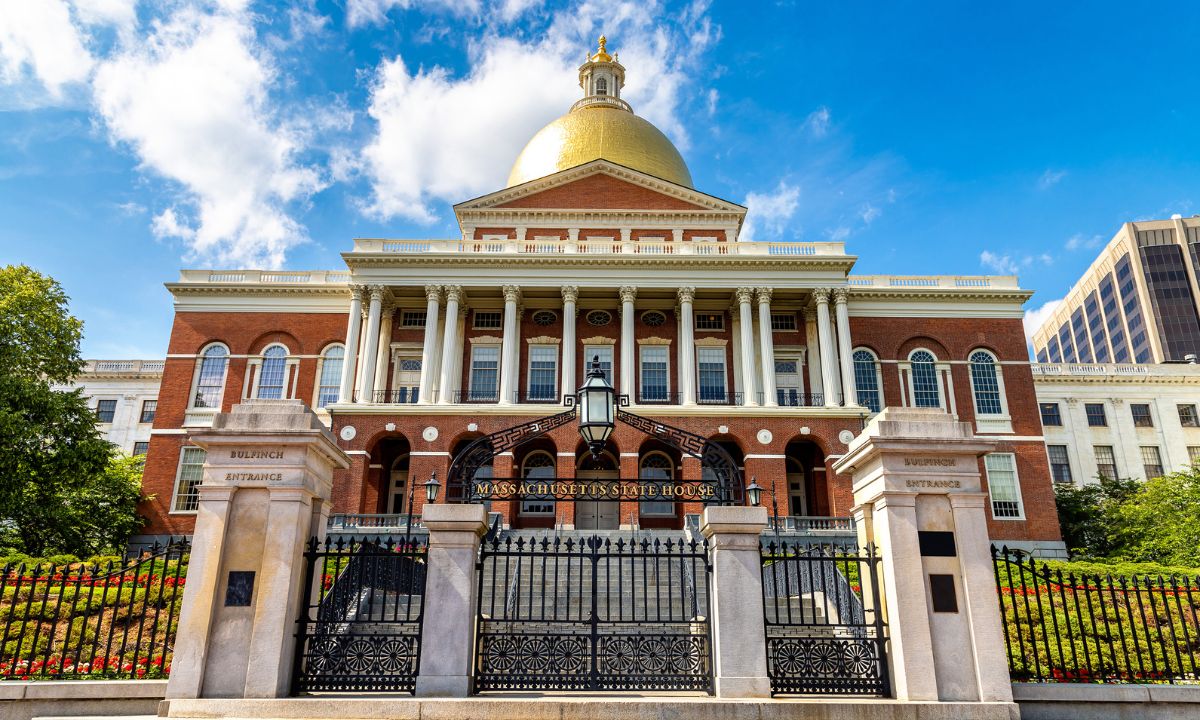Massachusetts Officials Seek ‘More Coherent Financial Aid System’
Earlier this year, Department of Higher Education launched MASFA to allow undocumented students to access millions of dollars in state aid programs.

Get stories like this delivered straight to your inbox. Sign up for The 74 Newsletter
With an array of more than 50 state financial aid programs available to college students, public higher education officials are embarking on an effort to simplify those offerings by 2026.
The Department of Higher Education plans to evaluate gaps in financial support as officials consider redesigning the mix of tuition reimbursement, grant, loan forgiveness, and tax programs, said Michael Dannenberg, deputy commissioner of policy. The overhaul is meant to expand education access, improve affordability, and ensure that aid delivery is reliable and predictable, he said.
“So part of our analysis will look at the ultimate unmet need or need of students, whether they are in state or out of state, whether they’re receiving financial aid programs from the state or not from the state,” Dannenberg said during a virtual Board of Higher Education meeting Tuesday. “We’ll try and simplify, and highlight, (and) prioritize those for needy families and socioeconomic mobility.”
Dannenberg said that developing a “more coherent financial aid system” would also focus on ensuring students complete their degrees and certificates.
Earlier this year, Department of Higher Education launched its Massachusetts Application for State Financial Aid (MASFA), a portal that’s meant to mimic the federal FAFSA form and allow undocumented students to unlock the millions of dollars available in state aid programs.
Nearly 400 MASFA applications have been submitted or are in progress for the 2023-2024 academic year, with another 230 applications in the pipeline so far for the next academic year, a Department of Higher Education spokesperson said Monday.
Dannenberg said at least 34 state financial aid programs serve less than 10,000 students, and more than 20 programs reach less than 2,000 recipients. At least two dozen state financial aid programs are not based on economic need, and at least 16 programs have a median award value under $2,000, he said.
Officials do not want to harm current financial aid recipients, and some programs may need to be adjusted with a grandfather clause to protect them, Dannenberg said.
The deputy commissioner showed board members a list of the programs, with some serving categories of students, including athletes, children of September 11 victims, foster and adopted children, and aspiring educators, paraprofessionals and nurses. Also on the list were recent major expansions of financial aid, including making community college free for adults ages 25 and older and covering tuition costs and fees for Pell-Grant eligible students.
“So we’ve got a lot of programs, a lot of very small small programs, and a lot of programs that are not linked to economic need,” he said.
As the redesign continues, Dannenberg said, the plan is to conduct analyses this spring and summer, and review redesign options with the board in the fall. Officials would then seek input from advocates, experts, and others at the start of 2025, share recommendations by spring of 2025, and prepare to implement the changes for the fall of 2026.
Beyond the state’s financial aid portfolio, higher education officials are grappling with the ripple effects of the severely delayed launch of the updated Free Application for Federal Student Aid.
The form only became available in January, compared to its typical fall rollout, after the system experienced multiple glitches with new funding formulas. During Tuesday’s board meeting, state officials urged students, including those frustrated by the FAFSA’s challenges this year, to still complete the form.
Students need to submit the FASFA by May 1 for “priority consideration,” though officials are considering extending that deadline due to the form’s delay, said Clantha McCurdy, senior deputy commissioner of access and student financial assistance.
The Department of Higher Education is spending $1 million on “strategies” to boost FAFSA completion rates, said Robert Dais, director of GEAR UP, or Gaining Early Awareness and Readiness for Undergraduate Programs. Dais did not offer examples, and said the department has partnered with the Department of Elementary and Secondary Education on ideas to “excite and incentivize students.”
The funding, outlined in the fiscal 2024 budget, can be used on public awareness campaigns and FAFSA “completion clinics.”
“We are targeting Gateway Cities and students from historically underserved populations,” Dais said. “There’s more to come soon, but essentially we just wanted folks to know that the Department of Higher Education is clearly focused on improving FAFSA and MASFA completion rates, and doing everything that we can to ensure that the neediest students are doing so.”
This article first appeared on CommonWealth Beacon and is republished here under a Creative Commons license.
Get stories like these delivered straight to your inbox. Sign up for The 74 Newsletter

;)